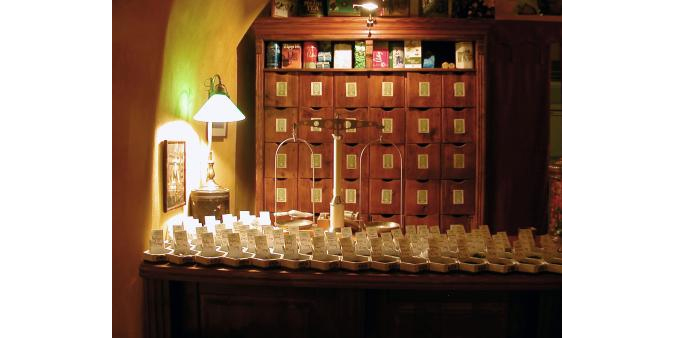Ah – tea. As a British expat I am obviously of the opinion that tea solves all the world’s ills. Tea is a matter close to my heart, and I was delighted when Expats.cz offered me the opportunity to explore some of Prague’s tea houses (čajovny) and sample their delights, all in the name of research.
Not that the tea cultures of Britain and the Czech Republic have very much in common. Back in Blighty, traditional tea shops are likely to feature lace doilies, little old ladies, vicars, a pot of Earl Grey and some scones. The Czech variety are altogether less stuffy, more ‘hippified’ and not necessarily somewhere you would take your grandmother.
Czech tea houses are a relatively recent development, compared to similar establishments elsewhere in Europe. Local legend has it that when Russian anarchist Mikhail Bakunin requested tea in a Prague café in 1848, he was met with blank faces. The owner had never heard of such a drink. Bakunin apparently then marched into the kitchen and made the Golden City’s first cuppa. Local legend does not care to explain what Bakunin used to make Prague’s first čaj. Presumably, like many tourists and expats, he arrived with his own supply.
Following Bakunin’s ‘liberation’ of the Prague café scene, the tea-drinking craze took off and by the outbreak of the First World War there were over 150 tea houses in Prague. Unlike Prague’s kavárnas, these did not survive the Communist occupation of then Czechoslovakia and the tea houses of the First Republic died out.
The čajovny in Prague today are the product of a post 1989 revival. In 1993, Aleš Jurina opened Dobra Čajovna on Wenceslas Square, which remains there today and set the wheels in motion for the rebirth of the čajovna. That chain now has 18 tea houses across the city, as well as some overseas. Prague boasts innumerate independent čajovny.
What to expect:
The clue is in the title – Čajovny serve čaj. Most of them serve it in abundance – pure teas from across the globe. Some boast a menu of almost 100 tea varieties, while less orthodox establishments also offer wine, beer, or coffee, which hard-core tea enthusiasts would almost certainly snub. Many čajovny offer hookah with flavoured tobacco.
Generally, these establishments are very, very casual – a large part of their custom comes from Czech teenagers and students, as well as tourists. Clientele and staff alike may dress in a ‘hippy chic’ or ‘skater’ attire, although in some establishments your waiter may don authentic oriental robes. Čajovny are heavily influenced by the tea cultures of different countries, and by the dress, decoration, and crockery of tea-producing countries and locations along traditional trade routes (such as the merchant towns of North Africa). Tea houses may simultaneously have furnishings and hookah from the Middle East, tea from China, and snacks from Japan.
Generally, čajovny offer a very chilled out, relaxed vibe, and are not places in which to rush. They tend to be (hookah aside) non-smoking. Over the next few weeks I will relax my way through some of Prague’s favourite čajovny.

Firstly however, a brief tea-house glossary may be helpful:
Čajovny – ‘Tea Houses’ in Czech!
Hookah – also known as a water-pipe, narghile, or hubble-bubble, a hookah is a smoking instrument in which the smoke of tobacco is passed through a bowl of water to purify and cool the smoke. The tobacco smoked is often fruit-flavoured and sometimes called Sheesha or Shisha.
Flowering – Flowering, or budding, teas, are small bundles of tea leaves bound together into a ball. When put into hot water the bundle expands and opens like a flower. Flowering jasmine tea is particularly popular. It is generally served in tall glasses, so that the flowering process can be enjoyed by the drinker.
Oolong – A Chinese tea produced through a unique process including drying the tea leaves in the sun before they are curled and twisted to release their strong, earthy, woody flavour.
Tea – Čaj or tea comes in a number of different forms. The most important factor by which to differentiate teas is the degree of oxidation (sometimes called fermentation) that the leaves have undergone. Traditional čaj includes white (having undergone the least oxidation), green, oolong and black (the most oxidised of all teas, and the most common mass-produced type of tea).
Expats.cz will review the major and best known tea rooms in Prague, one at a time. Have a read of our first one on Siva Tea room here.
***
Helen Ford is a creator of CzechingIn, a blog about an English lady in Prague. She now writes for Expats.cz on topics such as theatre, art, and recently also café and tea rooms in Prague.
Related articles












 Reading time: 4 minutes
Reading time: 4 minutes 


















